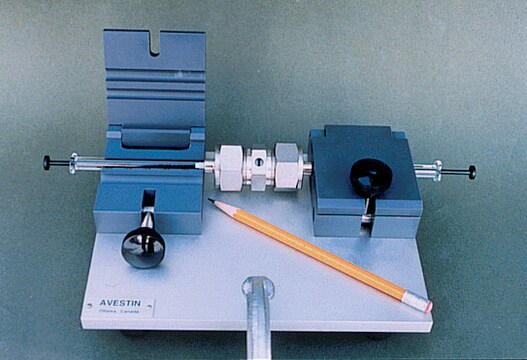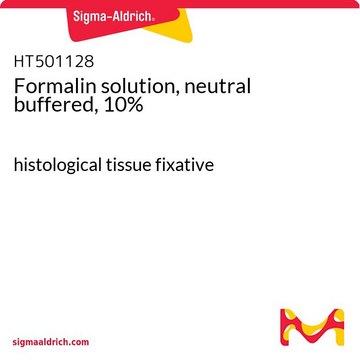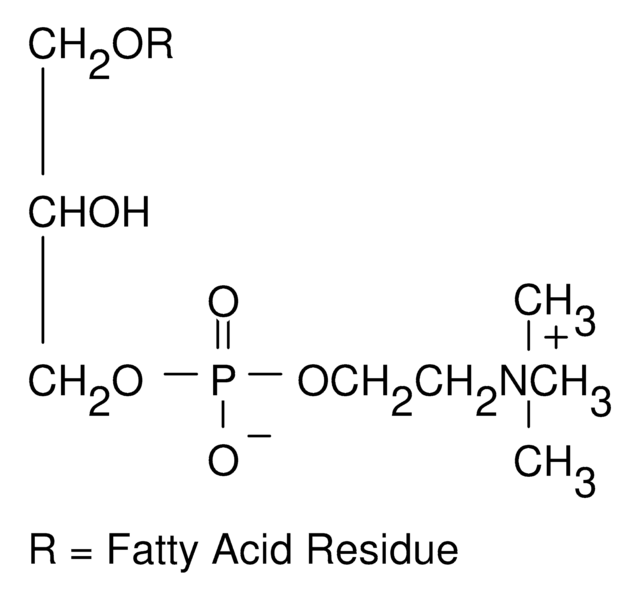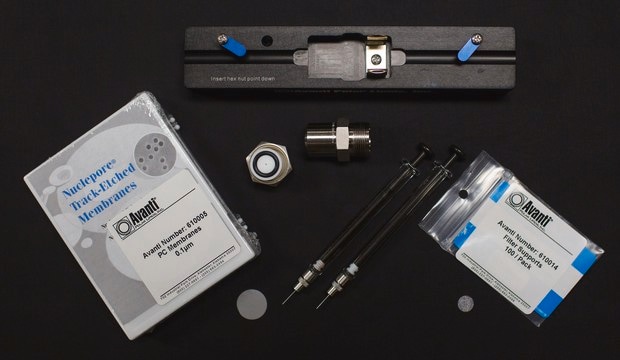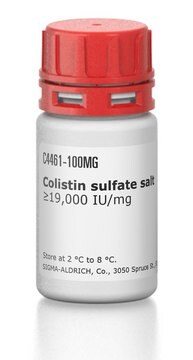CUP-509
Unsaturated Phosphatidylcholine Liposomes
100% 20:1 (Cis) PC
Zaloguj sięWyświetlanie cen organizacyjnych i kontraktowych
About This Item
Kod UNSPSC:
12352211
NACRES:
NA.25
Polecane produkty
Poziom jakości
skład
Phosphate buffered saline
stężenie
10 mM
zanieczyszczenia
100 mol % 20:1 (Cis) PC (1,2-dieicosenoyl-sn-glycero-3-phosphocholine)
wielkość cząstki
100 nm
pH
7.4
Szukasz podobnych produktów? Odwiedź Przewodnik dotyczący porównywania produktów
Opis ogólny
Liposomes are extensively used to study the interaction of proteins, peptides and other molecules with the surface of a lipid membrane. Liposomes made from unsaturated lipids have a negative liquid to gel phase transition temperature and have varying fatty acid lengths from 14:1-20:4 with and without cholesterol.
Zastosowanie
Drug delivery
Lipid-protein interactions
Lipid-protein interactions
Przechowywanie i stabilność
Liposomes should never be frozen. Liposomes should be stored in the dark at 4°C, except when brought to room temperature for brief periods prior to use.
Liposomes are made under sterile conditions. If you need to take multiple aliquots out of the vial, it is advised to take extreme care in not contaminating the vial. It is recommended to handle the vial under a sterile hood to maintain the sterility of the product. Liposomes should never be frozen. Ice crystals that form during freezing will rupture the lipid membrane of the liposomes and change the size of liposomes particles.
Liposomes are made under sterile conditions. If you need to take multiple aliquots out of the vial, it is advised to take extreme care in not contaminating the vial. It is recommended to handle the vial under a sterile hood to maintain the sterility of the product. Liposomes should never be frozen. Ice crystals that form during freezing will rupture the lipid membrane of the liposomes and change the size of liposomes particles.
Informacje prawne
Cellsome is a trademark of Encapsula NanoSciences
Product of Encapsula Nanosciences
Oświadczenie o zrzeczeniu się odpowiedzialności
For research use only
Ta strona może zawierać tekst przetłumaczony maszynowo.
Kod klasy składowania
12 - Non Combustible Liquids
Klasa zagrożenia wodnego (WGK)
WGK 2
Temperatura zapłonu (°F)
Not applicable
Temperatura zapłonu (°C)
Not applicable
Wybierz jedną z najnowszych wersji:
Certyfikaty analizy (CoA)
Lot/Batch Number
Przepraszamy, ale COA dla tego produktu nie jest aktualnie dostępny online.
Proszę o kontakt, jeśli potrzebna jest pomoc Obsługa Klienta
Masz już ten produkt?
Dokumenty związane z niedawno zakupionymi produktami zostały zamieszczone w Bibliotece dokumentów.
Nasz zespół naukowców ma doświadczenie we wszystkich obszarach badań, w tym w naukach przyrodniczych, materiałoznawstwie, syntezie chemicznej, chromatografii, analityce i wielu innych dziedzinach.
Skontaktuj się z zespołem ds. pomocy technicznej

